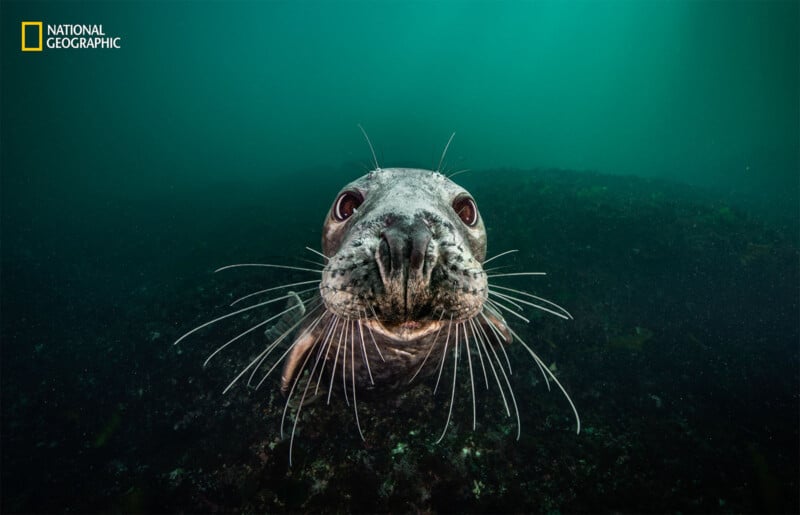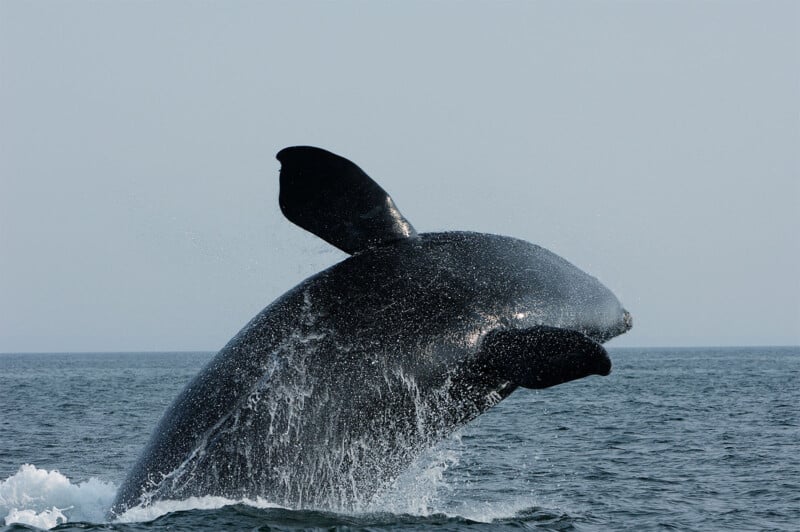A Photographer’s Mission to Save the Ocean Begins With Powerful Images
![]()
National Geographic photographer Brian Skerry has spent decades diving around the globe, telling the stories of the world’s oceans. For his latest projects, years in the making, he has been much closer to home, documenting the unprecedented — and deadly — changes happening in the Gulf of Maine, the waters Skerry grew up visiting as a child on Cape Cod, Massachusetts.
The Gulf of Maine Is Warming Faster Than 97% of the World’s Oceans
The Gulf of Maine is 7,500 miles long and 1,000 feet deep, and it is 36,000 square miles of ocean stretching from Massachusetts to the Maritimes in Canada. It’s home to remarkable biodiversity and has been the lifeblood of people in the New England region for millennia.

Unfortunately, the Gulf of Maine is imperiled like much of the world’s oceans. Worse yet, the gulf’s waters are warming faster than 97% of the global ocean, offering a startling preview of a looming disaster and destroying ocean life and habitats with terrifying rapidity.

As part of a cover story in National Geographic last month and a three-part documentary NOVA series premiering on PBS this week, Skerry investigates what’s happening in the Gulf of Maine, how it’s affecting animals and people alike, and what can still be done to curb the destruction.

Photography Connects People to the Stories That Matter
Through his lens, Skerry tells the story of one of Earth’s most incredible — and endangered — bodies of water. As beautiful as the Gulf of Maine is, Skerry admits that the damage it has experienced can be challenging to look at.
Skerry tells PetaPixel of a dive he did off the coast of the Schoodic Peninsula in Maine with a scientist. The scientist is studying the health of kelp in the Gulf of Maine as part of a grant, and during the dive, “he took his pencil and scratched out the word, ‘Baked,” Skerry recalls. In other words, the kelp had been killed by the prior summer’s hot weather.

“We’re seeing change in the life of a grant,” the scientist told Skerry. A grant is usually a couple of years long, so to see a kelp population go from healthy to compromised during a single grant period is unprecedented.
While it can be easy to dismiss the damage as, “Oh, it’s just kelp,” that would be a grave mistake. The baked kelp reflects damage to an entire ecosystem, and the warmer waters that are destroying it have repercussions all the way up the food chain.

The Human Side of the Ocean
Skerry’s work has always focused on the natural world, what’s happening to the oceans. Still, he knows the importance of showing the human side of the story — how ocean destruction impacts people, whether they live on the coast or much farther inland.
Sea Change: The Gulf of Maine not only includes the perspectives of the scientists working in the gulf but also of the fishers and people who rely on the ocean, including the Indigenous people who have relied upon the oceans for more than 10,000 years.
“In the past four decades spent exploring these waters, I have witnessed how such declines have made the ecosystem weaker and more vulnerable in ways I never imagined,” Skerry tells Anna Peele of National Geographic.

Skerry knows that his role as a photographer and visual storyteller is vital, but that he must rely heavily on scientists and researchers to contextualize what’s happening to the environment.

We Must Look at Climate Change, Even When It’s Hard to Stomach
“My goal is to help people understand what’s happening in our world,” Skerry says.
He also knows that as the situation gets more dire, his images become inherently more negative and the mission more critical.

“I am a pessimistic optimist,” Skerry says. “I believe that we’re living at a pivotal moment in history where, maybe for the first time in human history, humans understand both the problems and the solutions. We just need a collective will to move towards the solutions.”
Skerry thinks photographers can be instrumental in moving people toward the required solutions. Visuals are compelling and help create a personal relationship between people and a story. When paired with science and research, photography can achieve a lot.

“There’s a very powerful triumvirate. You’ve got three different things you can triangulate between a person story, the visuals, and the science,” the photographer explains. “I think if all three of those things can be presented to people, it presents a very strong case and moves us in the direction we need to go.”
“There’s a real urgency now,” Skerry adds.
There’s Still Time
Skerry also knows conservation works and that human action can positively impact the environment. He’s seen it first-hand around the world when visiting ecosystems under legal protections. They are doing much better than the surrounding areas, and in some cases, significant damage has been reversed.
![]()
“I started diving 47 years ago in these Gulf of Maine waters, and worked for National Geographic magazine for 26 years doing over 30 feature stories, seven covers. I’ve always wanted to do a story on my native waters, but another shiny object always took me somewhere else,” Skerry says.
“But when this scientific paper came out a few years ago that said the Gulf of Maine is warming faster than 97% of the rest of the global ocean, I said, ‘Wow, there’s an urgency. I really want to tell this story and help people understand what climate change is,'” he continues.
But there’s also a certain pressure to working on a story about your home. It’s “very personal,” Skerry says.
Now that he has finished his feature story for National Geographic and the Sea Change documentary is about to premiere on PBS, it’s bittersweet for the photographer.

“I’ve always wanted to do a story on my native waters for a big platform. I wanted to do it for National Geographic, or in this case, PBS too. Something like that would have always been a dream. So that’s great,” Skerry says.
“But on the other hand, the bitter part is that it’s a tale of woe. A tale of problems.”
“When I started decades ago, I would have never dreamed that [the Gulf of Maine] would look the way it looks today,” Skerry adds, saying that so many stories from the region must still be told.
![]()
As a Maine native and someone who has spent a considerable portion of my life on the coast, I am immensely grateful for Skerry’s work on this story. It hits close to home for me and millions of others.
However, the devastation, damage, and urgency for action aren’t unique to my home. These problems impact everyone in different, meaningful ways, no matter where they are.
The first part of the three-part Sea Change: The Gulf of Maine documentary series premieres tonight on PBS Nova, with the remaining two episodes airing on July 31 and August 7, respectively. More information about the series is available on PBS Nova’s website.
Skerry’s National Geographic cover story is available now.
Image credits: Brian Skerry, National Geographic, and PBS Nova.